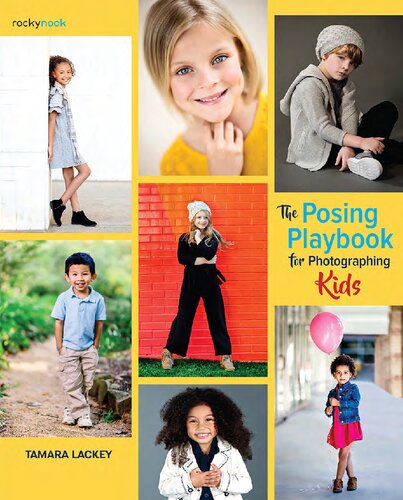

Most ebook files are in PDF format, so you can easily read them using various software such as Foxit Reader or directly on the Google Chrome browser.
Some ebook files are released by publishers in other formats such as .awz, .mobi, .epub, .fb2, etc. You may need to install specific software to read these formats on mobile/PC, such as Calibre.
Please read the tutorial at this link. https://ebooknice.com/page/post?id=faq
We offer FREE conversion to the popular formats you request; however, this may take some time. Therefore, right after payment, please email us, and we will try to provide the service as quickly as possible.
For some exceptional file formats or broken links (if any), please refrain from opening any disputes. Instead, email us first, and we will try to assist within a maximum of 6 hours.
EbookNice Team

Status:
Available4.7
25 reviewsAnyone who has photographed children knows: kids don't really do posing. But, as the photographer, it's your job and your responsibility to deliver lasting, impactful images where kids look great. More importantly, the goal is to create photographs of kids that are authentic, engage their spirit, and convey their unique personalities.
So how do you get beyond the "cheese" smile? How do you harness the wild energy of a kid who won't stop moving? How do you create energy and dynamism with a kid who just seems...bored and not into it? How do you do all that and achieve a compelling composition with flattering light and the proper exposure?
Tamara Lackey has been photographing children and families for years, and in The Posing Playbook for Photographing Kids, she teaches you her strategies and techniques for successfully posing and photographing children. The book begins with a discussion of "organic posing," an approach to directing the subject that focuses on making small adjustments that build up to a successful shot. Tamara moves on to the psychology of photographing children, covering how to read your subjects, work with different personality types, and elicit genuine engagement. She also discusses gear, accessories, composition, lighting, and camera settings.
Then, in six chapters that are the real core of the book, Tamara tackles typical shooting scenarios and works through each kind of shoot: what worked, what didn't, and how each shoot progresses from start to finish. It is very visually driven so you can quickly and easily see the development of the images throughout the shoot. Covering the real-world challenges you'll face when photographing children, Tamara discusses photographing children in the studio, in urban settings, on commercial and fashion shoots, in outdoor natural settings, and in groups. Finally, the last chapter provides a handy reference guide to fuel and inspire your shoots.
TABLE OF CONTENTS